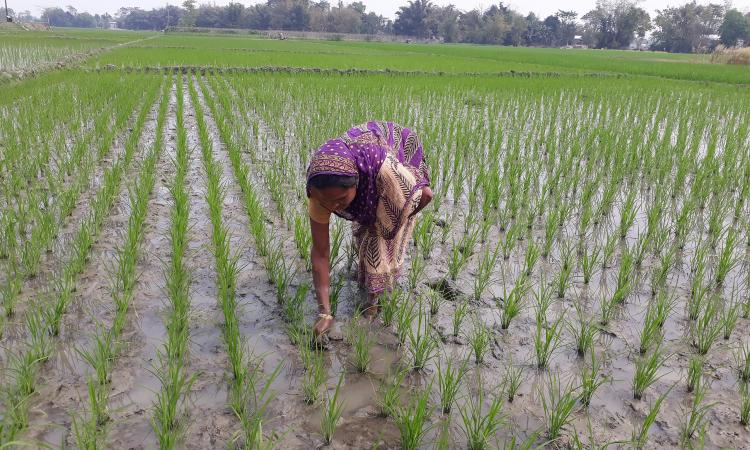
Agricultural productivity continues to be low in South Asian economies such as India. For example, the average paddy production per hectare in India is 3590 kg, which is much lower compared to 6686 kg per ha. in China informs this paper titled 'Effect of irrigation on farm efficiency in tribal villages of Eastern India' published in Agricultural Water Management.
The agricultural sector is highly sensitive to water variability and more vulnerable to climate change as water-intensive crop production is found to consume over 70 percent of global water.
Irrigation has been found to play a crucial role in offsetting the impact of rising temperatures and acts as a viable adaptation strategy to climate change. The demand for irrigation water for crop production has been projected to increase sharply in the next few decades and governments in developing economies are increasingly focusing on the expansion of the irrigation infrastructure to promote agricultural development.
Paddy, wheat, and maize are major crops cultivated in more than half of the total farm area in India. However, nearly 40 percent of the cultivated areas are rain-fed, and the average efficiency of farms is only 38 percent, which is much below the desired level of 70 percent.
The paper discusses the findings of a study that estimates the efficiency of agricultural productivity for rain-fed and irrigated paddy cultivation in the eastern province of India.
The findings:
- An evaluation of the farmer’s productivity through technical efficiency (TE), i.e., the relationship between resource inputs and outputs of 513 paddy farmers found that the farms were on average operating at 14 percent TE, much lower than the 86 percent optimal level.
- Irrigated paddy cultivators performed much better than rain-fed cultivators and while factors such as farm size and farmer’s habits of consuming psychoactive substances did not influence technical efficiency, surface irrigation showed a positive association.
- Irrigated paddy cultivators were able to achieve higher overall efficiency than the rain-fed paddy cultivators by employing better farm management practices and exploiting the scale of operations more optimally. Ten percent of the irrigated farms achieved efficiency scores over 40 percent and only 2 percent of rain-fed farms achieved the same.
- Irrigation played an important role in improving efficiency and farms under irrigated cultivation, mainly through surface (canal) irrigation, were found to function at superior efficiency, followed by drip and sprinkler methods. However, access to surface water irrigation (canal irrigation) was limited only to farmers living on plain land. Thus, farmers living on highlands need to explore other sources of irrigation practices, such as drip and sprinkler, that can increase TE and farm productivity. Government intervention to provide extensive training and facilities for these micro-irrigation practices can greatly help farmers in hilly regions to adopt microirrigation practices and improve farm efficiency.
- The determinants influencing farmers’ adoption of irrigation practices included external seed sourcing and proximity to extension services.
The paper calls for the need to :
- Design specific policies tailored to the region’s challenging geographical terrains that can lead to optimal resource utilisation and improve farm efficiency. Expansion of irrigation systems in high altitude areas that have scanty rainfall and limited access to surface water, can help to improve lower farm efficiency among tribal farmers.
- Have a dual-focused approach that not only enhances farm efficiency, but also reduces water consumption calling for the need for research on different irrigation practices and farmers’ adoption mechanisms, exploration of advanced irrigation techniques to mitigate losses due to evaporation, run-off, and deep percolation.
- Tailoring specific policies to address challenges arising from geographical disparities and optimise resource usage through targeted interventions such as subsidising essential farm inputs, imparting training on modern farming practices, and creating awareness about optimal input utilisation to enhance yield and efficiency in paddy cultivation, emphasizing sustainable and region specific agricultural development.
/articles/role-irrigation-improving-farm-efficiency-tribal-villages-eastern-india